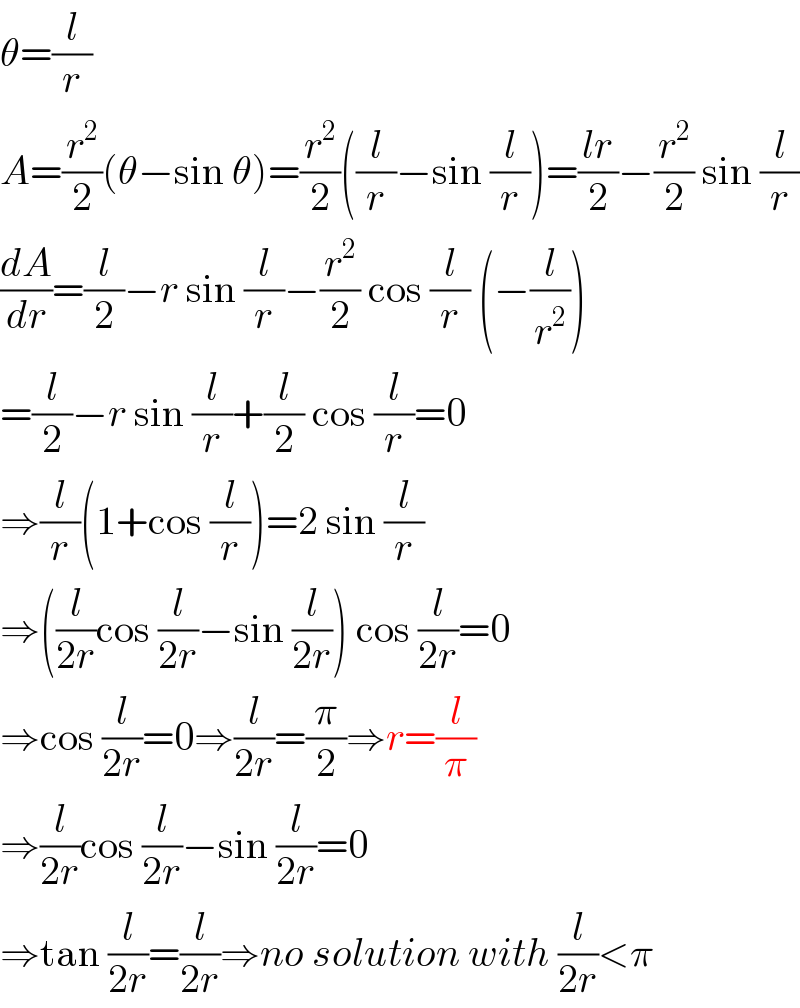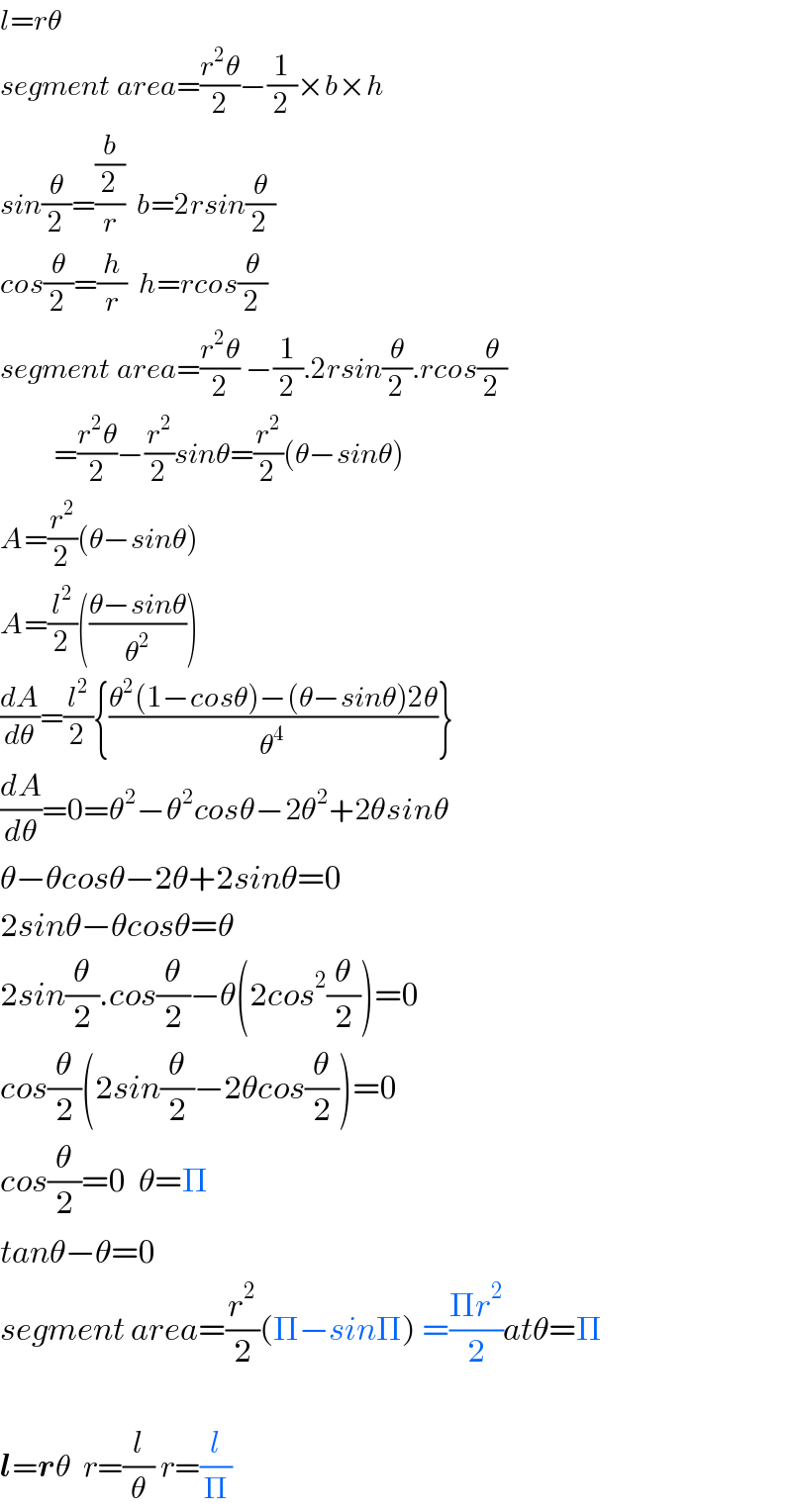
Question and Answers Forum
Question Number 41157 by ajfour last updated on 02/Aug/18

Commented by ajfour last updated on 02/Aug/18

Commented by MJS last updated on 02/Aug/18

Commented by ajfour last updated on 03/Aug/18

Answered by MrW3 last updated on 02/Aug/18

Answered by tanmay.chaudhury50@gmail.com last updated on 03/Aug/18

Commented by behi83417@gmail.com last updated on 03/Aug/18

Commented by tanmay.chaudhury50@gmail.com last updated on 03/Aug/18

